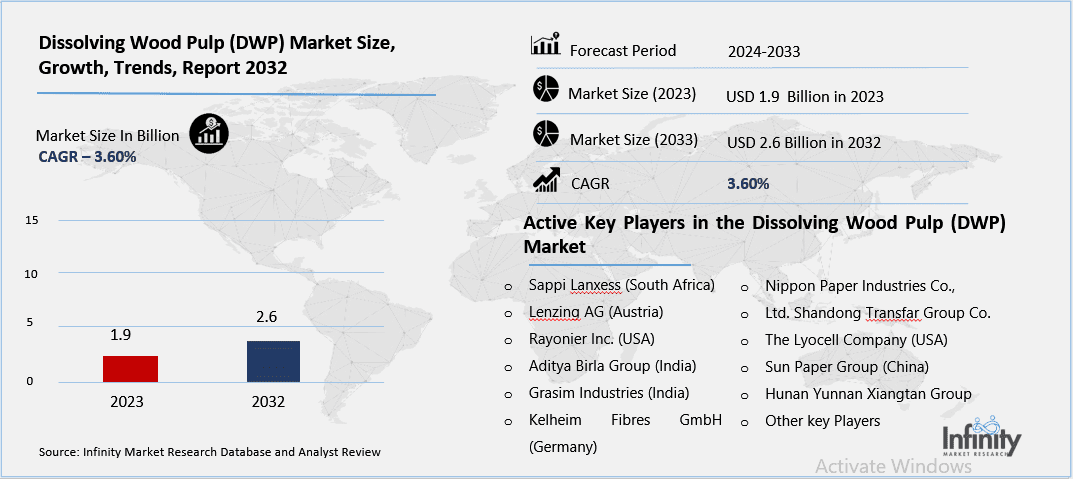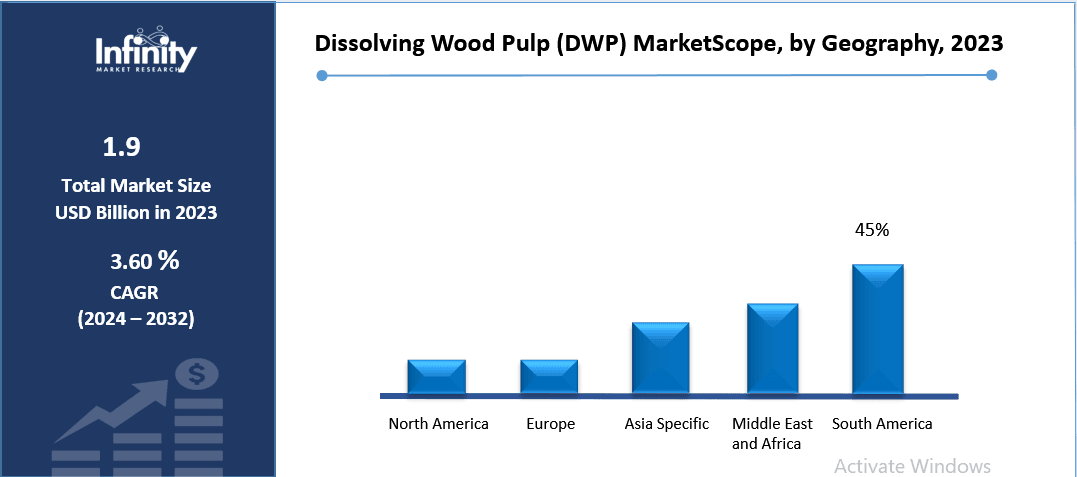
🔐 Secure Payment Guaranteed
Safe checkout with trusted global payment methods.
🌟 Why Choose Infinity Market Research?
At Infinity Market Research, we dont just deliver data — we deliver clarity, confidence, and competitive edge.
In a world driven by insights, we help businesses unlock the infinite potential of informed decisions.
Here why global brands, startups, and decision-makers choose us:
Industry-Centric Expertise
With deep domain knowledge across sectors — from healthcare and technology to manufacturing and consumer goods — our team delivers insights that matter.
Custom Research, Not Cookie-Cutter Reports
Every business is unique, and so are its challenges. Thats why we tailor our research to your specific goals, offering solutions that are actionable, relevant, and reliable.
Data You Can Trust
Our research methodology is rigorous, transparent, and validated at every step. We believe in delivering not just numbers, but numbers that drive real impact.
Client-Centric Approach
Your success is our priority. From first contact to final delivery, our team is responsive, collaborative, and committed to your goals — because you re more than a client; you re a partner.
Recent Reports
Global Myopia Control Lenses Market Report 2025-33
Hyaluronic Acid-based Dermal Fillers Market Report
Dissolving Wood Pulp (DWP) Market
Dissolving Wood Pulp (DWP) Market Global Industry Analysis and Forecast (2024-2032) By Type(High-Alpha Grade, Low-Alpha Grade),By Application( Viscose Fiber, Cellophane, Pharmaceuticals, Food & Beverages, Cosmetics, Others),By End-User Industry(Textile Industry, Paper & Pulp Industry, Pharmaceutical Industry, Food & Beverage Industry, Cosmetics & Personal Care Industry) and Region
Jan 2025
Manufacturing
Pages: 138
ID: IMR1448
Dissolving Wood Pulp (DWP) Market Synopsis
Dissolving Wood Pulp (DWP) Market Size Was Valued at USD 1.9 Billion in 2023, and is Projected to Reach USD 2.6 Billion by 2032, Growing at a CAGR of 3.60% From 2024-2032.
The Dissolving Wood Pulp (DWP) market can be defined as a market for the production and consumption of a high purity derivative of cellulose obtained from woods specifically used for the manufacture of viscose fibers, cellophane and various products in the pharmaceutical, cosmetics, and food industries. DWP is described by its solubility in chemicals for manufacturing s fibres and films for different sector. There is a high demand of DWP because of its sustainable elements and the trends for eco friendly products in clothes, packaging material and so on.
The Dissolving Wood Pulp (DWP) market remains a huge segment within the global chemical industry due to the rising demand of sustainable and bio-degradable substitutes to synthetic products. DWP is mainly required in the manufacture of fibres including viscose used in clothing and related consumer products. In the production of DWP, new bio based raw materials have gained favor replacing the more traditional petroleum based items in the recent past. Such a shift is connected with the increasing concern about the ecological problem and a higher level of awareness regarding the environmental impact of products in the market among consumers. This report also benefits the market thanks to a number of applications, especially in textile industry where viscose fibers derived from DWP can act as a natural replacement for the cotton and synthetics more and more increasingly sought after today.
Apart from textile industry, DWP is also now applied to manufacture biodegradable films and coatings mainly for the packing usage. For similar reasons, it is anticipated that its application in pharmaceuticals as well as in cosmetics and food products is steadily growing since DWP is a natural, safe, and efficient supplement for those industries. Sustainability or the low environmental impacts of products remains a key driver in the market for DWP with consumers inspiring innovations aimed at enhancing production techniques for the commodity. Furthermore, manufacturers are spending capital on incorporating better yield featuring and purity of the DWP as well as reducing the ecological effects of making this product.
Dissolving Wood Pulp (DWP) Market Outlook, 2023 and 2032: Future Outlook

Dissolving Wood Pulp (DWP) Market Trend Analysis
Trend: Eco-Friendly and Sustainable Solutions
The expansion of sustainable culture and the move to green material is among the most potent forces in awakening the DWP market. The demand for wider environmentally-friendly products has left the consumers and industries to look for natural, biodegradable and less hazardous fibre containing petrochemicals. For instance, owing to the increased push by government and world bodies for manufacturers to become environmentally conscious, it is expected that manufacturers should look for cleaner methods to do their production. The increase in concern about environmental consciousness in the clothing and fashion industries is making DWP the primary starting product used to create viscose fibers that are considered eco-friendlier to cotton and polyester.
This trend is also being used to increase the amount invested in the research and development of making the production of DWP more sustainable. There are new strategies in avoiding the use of energy, water and emissions during manufacturing by firms and industries. Due to increasing use of similar sustainable materials, DWP should increase in usage because of its biodegradability and the fact that the basic raw material is renewable; wood. This trend is not only characteristic for further development of the textile industry itself, but also for the other spheres of DWP use, such as packaging and cosmetics, within which the environmental factor has a significant impact.
Opportunity: Growth in Textile Industry
Among all these opportunities I can point out that the opportunity to increase sales in the market for sustainable textiles is one of the most promising in the DWP market, particularly in developing countries. Of course, with growing concern for environmental responsibility and the detrimental effects of fast fashion, there is a tendency towards the production of sustainable textiles. The DWP derived Viscose fibers are preferred to the natural cotton or synthetic fibers due to multifaceted benefits with the least negative impacts to the environment. Thus, while the fashion industry gradually shifts towards circular economy, the potential application or DWP as a sustainable raw material will be increasingly on demand.
Moreover, the current increasingly concerned awareness of sustainable consumers, along with the increased number of legislation restricting the environmental impact of the textile industry, is also driving the DWP market even further. Currently, manufacturers are aiming at producing more of sustainable fabrics that are made from DWP so as to match these consumer preferences. The current trend in the increase of the apparel production through eco-friendly methods across the developed and developing countries’ market offer a good opportunity for DWP producers to tap into the expanding market to produce more comprehensive variety of new products with emphasis on the efficient utilization of resources that leads to green economy.
Driver: Increased Demand for Viscose Fibers
One of the key forces behind the DWP market is an increasing customer need for viscose fibers. Most normally referred to as rayon, viscose fibers are popular in textile and fashion industries for their smooth texture, ability to let the skin breathe, as well as their flexibility. This was because DWP-Viscose is growing more popular in the market hourly, which will improve the quality and sustainability of the textile industry with increased demand for good fiber, as well as greater than cotton and polyester today. These include, for example consumers’ desire for products that are friendly to the environment and recyclable as well as the general concerns regarding the effects of artificial fibers on the environment.
The application of DWP for the manufacturing of viscose fibers is also increasing because of the cost-efficient way in manufacturing and favourable market for affordable high quality textile products. Consequently, most of the textile industries are experiencing huge demand of viscose fibers produced from DWP to supply in the market. This rising demand of DWP as a basic ingredient for viscose manufacturing will likely bring further growth to the DWP market in the next few years.
Restraint: Environmental and Regulatory Concerns
However, the major constraint, which has long posed a threat to the DWP market, is the environmental cost of manufacturing this product. While DWP itself is regarded more ecological than synthetic fibers, technology’s using often implies high water and chemical demands leading to larger environmental impact. The pulping process employed in the production of DWP encompasses exposure to dangerous chemicals and formation of by products that if not well controlled pose health risks to the society and the environment.
Besides environmental factors, the market for DWP has been experiencing growing pressure from global regulatory authorities to satisfy high level of environmental compliance. There have also been increased measures put in place by governments all over the world to regulate water usage, waste disposal and emissions that occur during the production process which would prove a hindrance to market growth due to extra costs incurred by manufacturers. These regulatory pressures can arguably pose a problem for the growth of the DWP market, particularly where meeting environmental requirements is more onerous and costly.
Dissolving Wood Pulp (DWP) Market Segment Analysis:
Dissolving Wood Pulp (DWP) Market Segmented on the basis of type, application and end user.
By Type
o High-Alpha Grade
o Low-Alpha Grade
By Application
o Viscose Fiber
o Cellophane
o Pharmaceuticals
o Food & Beverages
o Cosmetics
o Others
By Region
o North America (U.S., Canada, Mexico)
o Eastern Europe (Bulgaria, The Czech Republic, Hungary, Poland, Romania, Rest of Eastern Europe)
o Western Europe (Germany, UK, France, Netherlands, Italy, Russia, Spain, Rest of Western Europe)
o Asia Pacific (China, India, Japan, South Korea, Malaysia, Thailand, Vietnam, The Philippines, Australia, New-Zealand, Rest of APAC)
o Middle East & Africa (Turkey, Bahrain, Kuwait, Saudi Arabia, Qatar, UAE, Israel, South Africa)
By Type, High-Alpha Grade segment is expected to dominate the market during the forecast period
The DWP market is segmented into two main types: i.e high-alpha grade paper and low-alpha grade paper. High alpha grade DWP has a purity that is higher that the standard one and is employed mainly to manufacture viscose fibers that are of high quality as well as other related products. This grade of DWP is costlier since getting it to the kind of purity represented here takes more time and effort. Budget constraints and competition issues remain a challenge to high-alpha grade DWP demand as most demand comes from the textile and fashion industries that require premium quality material.
Low-alpha grade DWP is used in applications such as food processing, pharmaceuticals, and in some selected industries, for example, fabrics and chemicals. It may comprise slightly lower percentage of alpha particles compared to what is provided in high-alpha grade but it is also much cheaper than the latter, which makes it more preferable especially for volume makers who are always on the lookout for a cheaper product to manufacture. As for the low-alpha grade DWP, there is increasing demand for its applications, where pure viscose fibers are not essential, and where cost is the major criterion.
By Application, Viscose Fiber segment expected to held the largest share
There are many types of application in the DWP market and viscose fiber is the most famous and the largest one. DWP such as Viscose fibers are a popular textile product especially in the fashion industry since they are environmental friendly than cotton and synthetic fibers. This increasing need for sustainable fabrics is the key to promoting DWP for the manufacture of viscose fibers. Other DWP uses include; Cellophane which is a biodegradable film used in packaging and in pharmaceuticals is used as a stabilizer coating on drugs.
DWP also finds its utility in the food and beverage sector where it is used in the capacity of a stabilizer, emulsifier and chiefly an added ingredient which thicken the food stuffs. In cosmetics particularly in South Africa, DWP is applied to design naturally biodegradable materials for skin care products. These applications are on the rise given the ever rising consumer concern of health enhanced by environment friendly products. Primary application of DWP across many industries is another factor that contributes to the growth of its market, more importantly, its use in the manufacturing of sustainable material actively used in packaging, pharmaceuticals and personal care industries.
Dissolving Wood Pulp (DWP) Market Regional Insights:
North America is Expected to Dominate the Market Over the Forecast period
North America is today considered dominant market for DWP due to the existence of the numerous key players in the region and the better manufacturing facilities. The rise in import and usage of green products in North America specifically in textile and packaging sectors is forcing their implementation of the DWP. Moreover, North America has stable legal standards for environmentally friendly activities, also trending the DWP market favorably in this area further.
In addition, North American countries are directing their strategic investments in research and development to develop more sustainable form of DWP production process. The growing range of products with DWP base is also acting to extend the string base of the region as offering products for application in such fields as textiles, pharmaceuticals, and food packing. Such a trend will persist as the global consumer turns towards eco-friendly and biodegradable solutions to provide longevity to North America’s lead in the DWP market.
Dissolving Wood Pulp (DWP) Market Share, by Geography, 2023 (%)

Active Key Players in the Dissolving Wood Pulp (DWP) Market
o Sappi Lanxess (South Africa)
o Lenzing AG (Austria)
o Rayonier Inc. (USA)
o Aditya Birla Group (India)
o Grasim Industries (India)
o Kelheim Fibres GmbH (Germany)
o China National Petroleum Corporation (China)
o Nippon Paper Industries Co., Ltd. (Japan)
o Shandong Transfar Group Co. (China)
o The Lyocell Company (USA)
o Sun Paper Group (China)
o Hunan Yunnan Xiangtan Group (China)
o Other key Players
Global Dissolving Wood Pulp (DWP) Market Scope
|
Global Dissolving Wood Pulp (DWP) Market | |||
|
Base Year: |
2023 |
Forecast Period: |
2024-2032 |
|
Historical Data: |
2017 to 2023 |
Market Size in 2023: |
USD 1.9 Billion |
|
Forecast Period 2024-32 CAGR: |
3.60% |
Market Size in 2032: |
USD 2.6 Billion |
|
Segments Covered: |
By Type |
· High-Alpha Grade · Low-Alpha Grade | |
|
By Application |
· Viscose Fiber · Cellophane · Pharmaceuticals · Food & Beverages · Cosmetics · Others | ||
|
By Region |
· North America (U.S., Canada, Mexico) · Eastern Europe (Bulgaria, The Czech Republic, Hungary, Poland, Romania, Rest of Eastern Europe) · Western Europe (Germany, UK, France, Netherlands, Italy, Russia, Spain, Rest of Western Europe) · Asia Pacific (China, India, Japan, South Korea, Malaysia, Thailand, Vietnam, The Philippines, Australia, New-Zealand, Rest of APAC) · Middle East & Africa (Turkey, Bahrain, Kuwait, Saudi Arabia, Qatar, UAE, Israel, South Africa) · South America (Brazil, Argentina, Rest of SA) | ||
|
Key Market Drivers: |
· Increased Demand for Viscose Fibers | ||
|
Key Market Restraints: |
· Environmental and Regulatory Concerns | ||
|
Key Opportunities: |
· Growth in Textile Industry | ||
|
Companies Covered in the report: |
· Sappi Lanxess (South Africa), Lenzing AG (Austria), Rayonier Inc. (USA), Aditya Birla Group (India), Grasim Industries (India), Kelheim Fibres GmbH (Germany), China National Petroleum Corporation (China), and Other Major Players. | ||
📘 Frequently Asked Questions
1. What would be the forecast period in the Dissolving Wood Pulp (DWP) Market research report?
Answer: The forecast period in the Dissolving Wood Pulp (DWP) Market research report is 2024-2032.
2. Who are the key players in the Dissolving Wood Pulp (DWP) Market?
Answer: Sappi Lanxess (South Africa), Lenzing AG (Austria), Rayonier Inc. (USA), Aditya Birla Group (India), Grasim Industries (India), Kelheim Fibres GmbH (Germany), China National Petroleum Corporation (China), and Other Major Players
3. What are the segments of the Dissolving Wood Pulp (DWP) Market?
Answer: The Dissolving Wood Pulp (DWP) Market is segmented into Type, Application, End User and region. By Type, the market is categorized into High-Alpha Grade, Low-Alpha Grade. By Application, the market is categorized into Viscose Fiber, Cellophane, Pharmaceuticals, Food & Beverages, Cosmetics, Others. By End-User Industry, the market is categorized into Textile Industry, Paper & Pulp Industry, Pharmaceutical Industry, Food & Beverage Industry, Cosmetics & Personal Care Industry. By region, it is analyzed across North America (U.S.; Canada; Mexico), Eastern Europe (Bulgaria; The Czech Republic; Hungary; Poland; Romania; Rest of Eastern Europe), Western Europe (Germany; UK; France; Netherlands; Italy; Russia; Spain; Rest of Western Europe), Asia-Pacific (China; India; Japan; Southeast Asia, etc.), South America (Brazil; Argentina, etc.), Middle East & Africa (Saudi Arabia; South Africa, etc.).
4. What is the Dissolving Wood Pulp (DWP) Market?
Answer: The Dissolving Wood Pulp (DWP) market can be defined as a market for the production and consumption of a high purity derivative of cellulose obtained from woods specifically used for the manufacture of viscose fibers, cellophane and various products in the pharmaceutical, cosmetics, and food industries. DWP is described by its solubility in chemicals for manufacturing s fibres and films for different sector. There is a high demand of DWP because of its sustainable elements and the trends for eco friendly products in clothes, packaging material and so on.
5. How big is the Dissolving Wood Pulp (DWP) Market?
Answer: Dissolving Wood Pulp (DWP) Market Size Was Valued at USD 1.9 Billion in 2023, and is Projected to Reach USD 2.6 Billion by 2032, Growing at a CAGR of 3.60% From 2024-2032.


🔐 Secure Payment Guaranteed
Safe checkout with trusted global payment methods.
🌟 Why Choose Infinity Market Research?
- Accurate & Verified Data:Our insights are trusted by global brands and Fortune 500 companies.
- Complete Transparency:No hidden fees, locked content, or misleading claims — ever.
- 24/7 Analyst Support:Our expert team is always available to help you make smarter decisions.
- Instant Savings:Enjoy a flat $1000 OFF on every report.
- Fast & Reliable Delivery:Get your report delivered within 5 working days, guaranteed.
- Tailored Insights:Customized research that fits your industry and specific goals.




